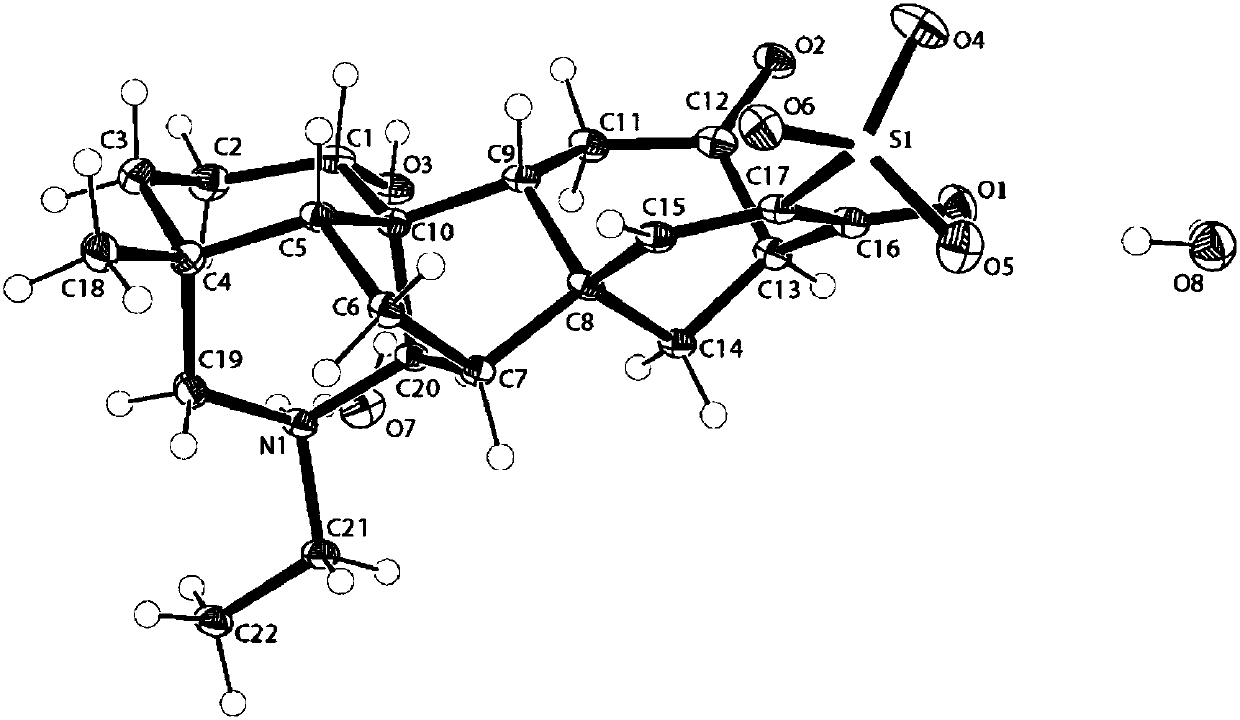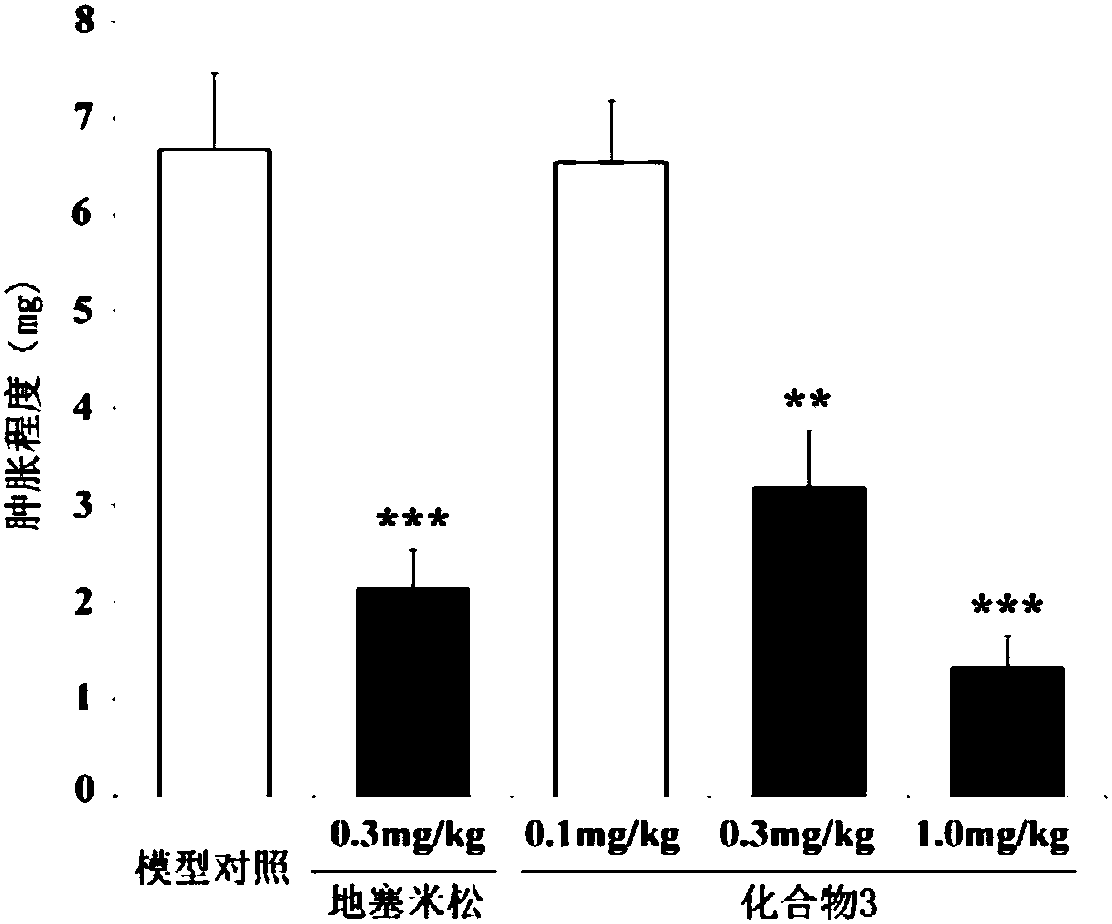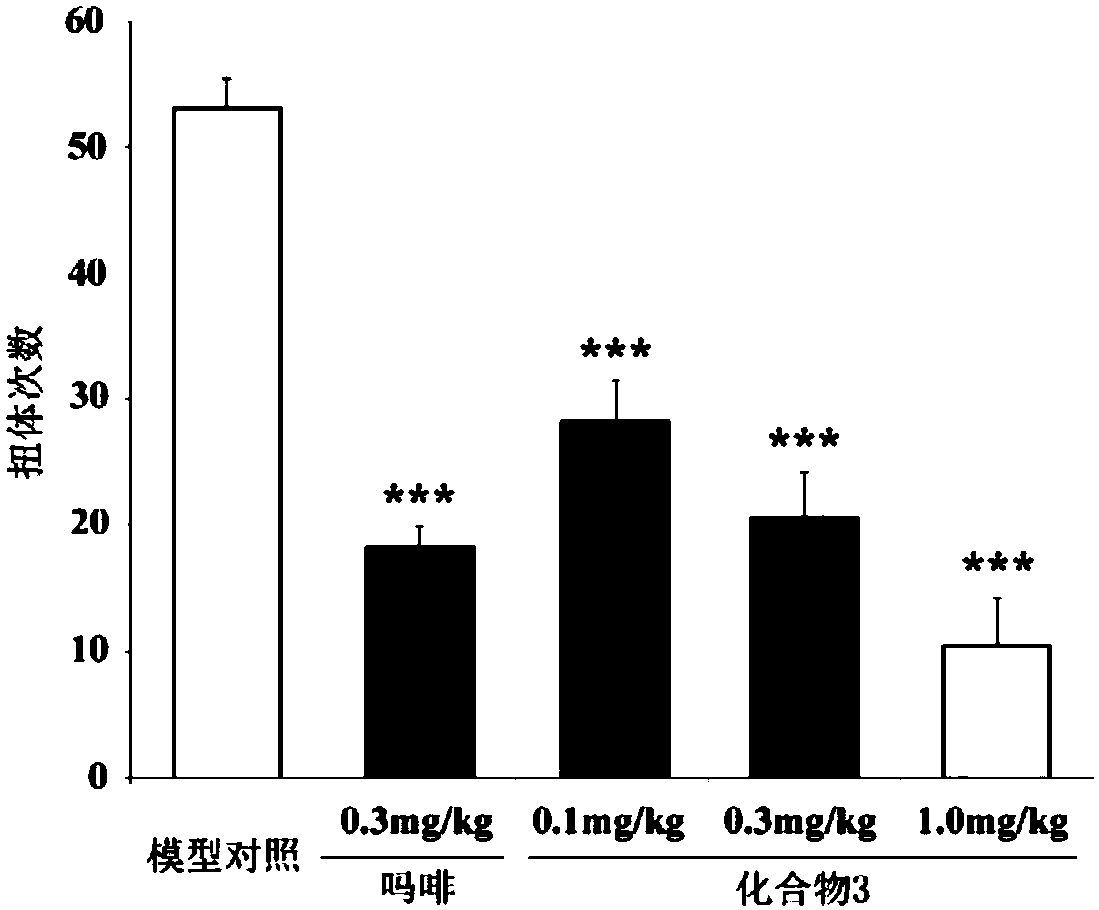C20 ditepenoid alkaloids with anti-inflammatory and analgesic effects in radix aconiti carmichaeli and application thereof
A CH2CH3, drug technology, applied in the field of C20 diterpene alkaloid compounds, can solve the problems such as anti-inflammatory and analgesic that no one has reported
- Summary
- Abstract
- Description
- Claims
- Application Information
AI Technical Summary
Problems solved by technology
Method used
Image
Examples
Embodiment 1
[0114] Embodiment 1, compound 1-3 is the novel C that extracts separation and purification from aconite 20 Diterpene alkaloids, its separation and purification process is as follows:
[0115] Dried aconite 50Kg, crushed and extracted with water at 40°C for 3 times, each time for 6 hours, the extracts were combined, the solvent was recovered under reduced pressure to 120L, and separated by macroporous resin (HPD-110, 19kg) column chromatography (20×200cm) , sequentially eluted with water (50L), 30% ethanol (120L), 50% ethanol (120L), and 95% ethanol (100L), and the solvent was recovered under reduced pressure to obtain the corresponding eluted fractions (A-D), in which part C was eluted with MCI The resin (CHP 20P) was separated and eluted sequentially with water (10L), 30% ethanol (30L), 50% ethanol (20L) and 95% ethanol (10L) to obtain the corresponding eluted fractions (C1-C4). The fraction eluted with 30% ethanol (C2, 600g) was separated with MCI resin (CHP 20P) again, fol...
Embodiment 2
[0116] Embodiment 2 anti-inflammatory effect, the impact of compound 3 on mouse ear swelling
[0117] The mouse ear swelling model induced by croton oil mixed with inflammatory solution is widely used at home and abroad. The model is stable and the inflammation lasts for a long time. It is the most commonly used model for screening anti-inflammatory drugs. In croton oil, the main inflammatory component is phorbol ester (TPA). TPA can change vascular permeability, activate macrophages, promote the accumulation of inflammatory cells, increase the release of inflammatory mediators, such as cyclooxygenase-2 (COX-2), induce NO synthase (iNOS), and secrete Inflammatory factors such as IL-6, IL-1β, TNF-α. Therefore, the croton oil-induced mouse ear swelling model is a mature model for evaluating anti-inflammatory drugs. [Wei Wei, Wu Ximei, Li Yuanjian. Pharmacological Experimental Methodology. People's Health Publishing House. 4th Edition. p742.]
[0118] Experimental animals: hea...
Embodiment 3
[0127] Embodiment 3 analgesic effect, the impact of compound 3 on acetic acid-induced pain in mice
[0128] The acetic acid writhing test is a classic model of peripheral analgesia, and is often used as one of the methods for evaluating and screening analgesics. Inject a certain volume and concentration of acetic acid into the abdominal cavity of mice, stimulate the visceral and parietal peritoneum, cause a large area of deep inflammatory pain for a long time, and cause the mice to appear concave in the abdomen, trunk and hind legs stretched, and high hips. Behavioral responses are called writhing responses. The frequency of this reaction is high within 15 minutes after injection, so the number of times of writhing within 15 minutes after injection or the number of mice with reaction is used as the quantitative index of pain. [Wei Wei, Wu Ximei, Li Yuanjian. Pharmacological Experimental Methodology. People's Medical Publishing House. 4th Edition. p770.]
[0129] Experiment...
PUM
 Login to View More
Login to View More Abstract
Description
Claims
Application Information
 Login to View More
Login to View More - R&D
- Intellectual Property
- Life Sciences
- Materials
- Tech Scout
- Unparalleled Data Quality
- Higher Quality Content
- 60% Fewer Hallucinations
Browse by: Latest US Patents, China's latest patents, Technical Efficacy Thesaurus, Application Domain, Technology Topic, Popular Technical Reports.
© 2025 PatSnap. All rights reserved.Legal|Privacy policy|Modern Slavery Act Transparency Statement|Sitemap|About US| Contact US: help@patsnap.com



